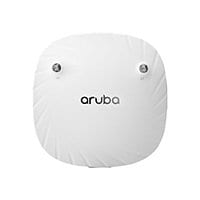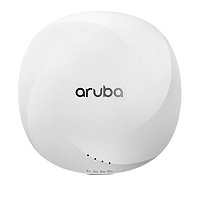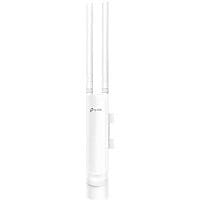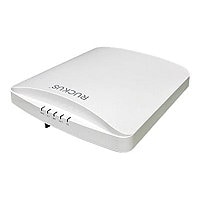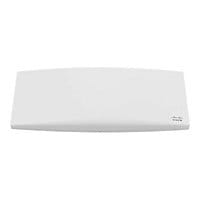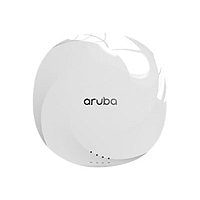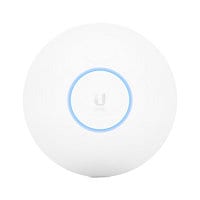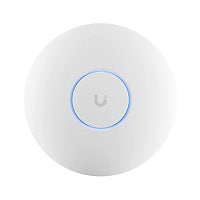Tech specs
Brand
Aruba
Product Line
HPE Aruba
Model
AP-505 (US)
Edition
Campus
Manufacturer
Aruba
Optical Drive Type
None
Compliant Standards
IEEE 802.11a, IEEE 802.11ac, IEEE 802.11ax, IEEE 802.11b, IEEE 802.11g, IEEE 802.11n, IEEE 802.3af, IEEE 802.3at, IEEE 802.3az, Wi-Fi CERTIFIED 6
Connectivity Technology
Wireless
Data Link Protocols
Bluetooth 5.0, IEEE 802.11a, IEEE 802.11ac, IEEE 802.11ax (Wi-Fi 6), IEEE 802.11b, IEEE 802.11g, IEEE 802.11n
Data Transfer Rate
1.2 GBps
Features
2x2 MIMO technology, Advanced Cellular Coexistence (ACC), Auto-uplink (auto MDI/MDI-X), ClientMatch, Cyclic Delay Diversity (CDD), Cyclic shift diversity (CSD), Deep Packet Inspection (DPI), Direct Sequence Spread Spectrum (DSSS), Dynamic Frequency Selection (DFS), Energy-Efficient Ethernet (EEE), High Efficiency (HE) support, High-Throughput (HT) support, Intelligent Power Monitoring (IPM), LED off mode, Low Density Parity Check (LDPC), Maximum Ratio Combining (MRC), MU-MIMO technology, Orthogonal Frequency Division Multiple Access (OFDMA), Orthogonal Frequency Division Multiplexing (OFDM), Packet aggregation A-MPDU, Packet aggregation A-MSDU, Security slot (Kensington security lock compatible), SU-MIMO technology, Target Wait Time (TWT), Transmit Beam-forming (TxBF) ready, Trusted Platform Module (TPM), Very High Throughput (VHT) support
Form Factor
In-ceiling
Network Band
2.4 GHz, 5 GHz
Power Over Ethernet (PoE)
PoE
Product Type
Wireless access point
Spread Spectrum Method
DSSS, OFDM, OFDMA
Status Indicators
Status, System
Wireless LAN
802.11a/b/g/n/ac/ax, Bluetooth 5.0
Interface Provided
1 x 1000Base-T - RJ-45, 1 x console - micro-USB, 1 x USB 2.0 - Type A
Power Consumption Operational
8.9 watt
Antenna Form Factor
Internal
Antenna Gain Level
5.7 DBi
Antennas
2
Directivity
Omni-directional
Encryption
SSL, WPA, WPA2, WPA3
Internet of Things (IoT) Compatible
Yes
Line Coding Format
1024 QAM, 16 QAM, 256 QAM, 64 QAM, BPSK, CCK, OFDM, OFDMA, QPSK
Max Operating Temperature
122 degree Fahrenheit
Min Operating Temperature
32 degree Fahrenheit
MTBF
148 Year
Operating Humidity
5 - 93% (non-condensing)
Operating System Required
ArubaOS, InstantOS
Capacity
BSSIDs per radio: 16, OFDMA units: 8, Wireless clients per Wi-Fi radio: 256
IoT Communications Technology
Bluetooth Low Energy (LE), Zigbee
Packaged Quantity
1
Ruggedized Design
Indoor
Service Activation
No
Network Device
Aggregate throughput: 1.774 Gbps, Maximum data rate (2.4 GHz): 574 Mbps, Maximum data rate (5 GHz): 1.2 Gbps
Included Accessories
Mounting bracket
Color Category
White
Compliant Standards
CE/EMC, Directive 2014/30/EU, Directive 2014/35/EU, Directive 2014/53/EU, EN 60601-1-1, ETS 300 019 Class 1.2, ETS 300 019 Class 2.3, FCC, IEC/EN/UL 60950, ISED, UL 2043
ENERGY STAR Certified
No
EPEAT Compliant
No
TCO Certified
No
Service & Support Details
Limited warranty - lifetime
Limited Warranty
Limited Lifetime
Accessories
- CDW Recommends (8) total accessories
- Networking (8) total accessories
- Cables & Connectors (1) total accessories
- USB Cables & Adapters (1) total accessories
- Switches (1) total accessories
- Network Management (1) total accessories
View More Accessories
Warranties
1-8 of 34 reviews
Pricing competitiveness and remote management have enhanced network flexibility
What is our primary use case?
Currently, my primary focus is on Zero Trust Network Access (ZTNA) technology. However, when it comes to wireless LAN access points, I specifically work with Instant On Access Points, models AP11 and AP21, from HP Aruba. I primarily recommend Aruba access points to small banking s
Read more
Reliable access with supportive service and cost advantages
What is our primary use case?
Our customers are hotels, and the company I worked for provides turnkey solutions for these hotels. Our work starts with infrastructure, implementing passive and copper cabling, followed by active components like switches and controllers.
On top of that, we provide hospitality so
Read more
Efficient provisioning with remote access control and an easy setup
What is our primary use case?
Our primary use case is to provide public Wi-Fi services initiated by the government. This includes deploying the solution in both indoor and outdoor venues. We demonstrate the use and speed of Wi-Fi 6E access points as part of this initiative.
What is most valuable?
The control
Read more
Enhanced connectivity with robust security and seamless integration
What is our primary use case?
Our primary use case for Aruba Access Points is WiFi connectivity, including 802.1x authentication, guest authentication, and security posture assessment for endpoints.
How has it helped my organization?
We found that with Aruba, we can operate more efficiently, achieving good r
Read more
Provides secure and transparent access points for all users, and our company experiences excellent coverage across the premises
What is our primary use case?
The solution is used in our offices, and we are a state department in our country's education ministry.
What is most valuable?
Aruba Access Points provides secure and transparent access points for all users, and our company experiences excellent coverage across the premises. Our
Read more
Most of our clients prefer this solution to others
What is our primary use case?
Aruba is a very popular brand, running from Access, and they have very competitive pricing. When compared to Cisco, they have a very good range. Most of the clients also prefer Aruba in India. It's the working environment.
What is most valuable?
The interest funds are valuable.
Read more
Offers good features in areas like power adapters and high-efficiency
What is our primary use case?
It is a tool that provides wireless Wi-Fi services in different locations, specifically in corporate locations. It has many features, such as power adapters and high efficiency.
What needs improvement?
The integration capabilities of the product with the tools from other vendors
Read more
A wireless network solution with sustainable pricing and excellent support
What is our primary use case?
We have an academic focus. We are a medical technology company—MedTech, specifically. All of our academic programs operate on the Aruba platform. In addition to our internal systems, all users, whether an enterprise or any other category, use Aruba wireless technology.
How has it
Read more




